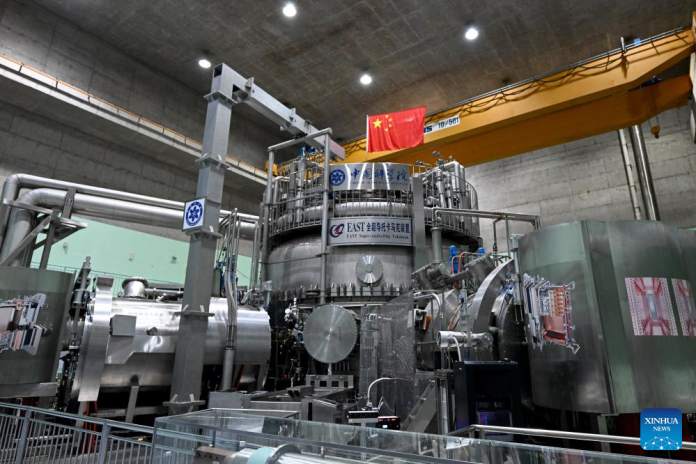China’s “Artificial Sun” Breaks World Record: A New Era for Fusion Energy
The dream of limitless, clean energy has taken a monumental leap forward. On January 2025, China’s Experimental Advanced Superconducting Tokamak (EAST), often referred to as the country’s “artificial sun,” achieved a groundbreaking scientific feat—maintaining steady-state high-confinement plasma operation for an astonishing 1,066 seconds. This incredible milestone not only sets a new world record but also represents a significant advancement in humanity’s pursuit of harnessing nuclear fusion as a viable power source.
Breaking Records and Pushing Boundaries
This achievement, spearheaded by the Institute of Plasma Physics (ASIPP) at the Hefei Institutes of Physical Science (HFIPS) of the Chinese Academy of Sciences, shatters EAST’s own previous record of 403 seconds set in 2023. Maintaining a stable, high-confinement plasma state for nearly 18 minutes marks a critical step forward in fusion research, pushing the boundaries of what was previously thought possible.
Nuclear fusion—the process that powers the sun—requires extreme conditions. For fusion to occur, atomic nuclei must combine at temperatures exceeding 100 million degrees Celsius, creating vast amounts of energy. However, replicating these conditions on Earth presents immense technical challenges, particularly in sustaining the process long enough to make it viable for power generation.
“A fusion device must achieve stable operation at high efficiency for thousands of seconds to enable the self-sustaining circulation of plasma, which is essential for the continuous power generation of future fusion plants,” explained SONG Yuntao, ASIPP director and vice president of HFIPS. The recent record, he added, is a monumental step toward realizing the dream of a functional fusion reactor.
Engineering Excellence Behind the Breakthrough
The path to this historic achievement was paved by significant engineering upgrades to the EAST facility. According to Gong Xianzu, head of the EAST Physics and Experimental Operations division, multiple system enhancements played a pivotal role, particularly improvements to the heating system. Previously operating at the power equivalent of 70,000 household microwave ovens, the heating system now boasts double the output, all while maintaining the stability and continuity essential for such delicate experiments.
EAST’s sustained high-confinement plasma operation demonstrates that the reactor can manage the extreme temperatures and magnetic fields necessary to maintain plasma stability—key requirements for future fusion reactors.

A Global Effort Toward Fusion Power
EAST has served as an open research platform since its inception in 2006, inviting both Chinese and international scientists to collaborate on advancing fusion research. In the same year, China officially joined the International Thermonuclear Experimental Reactor (ITER) program as its seventh member. ITER, currently under construction in southern France, is poised to become the world’s largest magnetic confinement plasma physics experiment and the biggest tokamak fusion reactor ever built.
Under the ITER agreement, China is responsible for around 9% of the project’s construction and operation, with ASIPP leading the Chinese mission. EAST’s recent accomplishments are not just victories for China but for the entire global scientific community striving toward fusion power.
In recent years, EAST has consistently achieved breakthroughs in high-confinement mode—an essential operational mode for experimental fusion reactors like ITER and future projects such as China’s own Fusion Engineering Test Reactor (CFETR). These advancements provide invaluable data and insights that are helping shape the future of global fusion research.
The Road Ahead: From Experiment to Energy Source
The ultimate goal of developing an “artificial sun” is to replicate the sun’s nuclear fusion process on Earth, providing humanity with a virtually limitless and clean energy source. This could not only revolutionize the global energy landscape but also enable new possibilities for space exploration, potentially powering missions far beyond our solar system.
In Hefei, Anhui Province, where EAST is located, a new generation of experimental fusion research facilities is already under construction. These state-of-the-art labs are expected to accelerate the development and application of fusion energy, bringing us closer to the dream of practical, sustainable fusion power.
“We hope to expand international collaboration via EAST and bring fusion energy into practical use for humanity,” said SONG.
While challenges remain before fusion energy becomes a part of our everyday lives, EAST’s record-breaking achievement is a beacon of hope, illuminating the path toward a cleaner, brighter future powered by the same force that fuels the stars.
